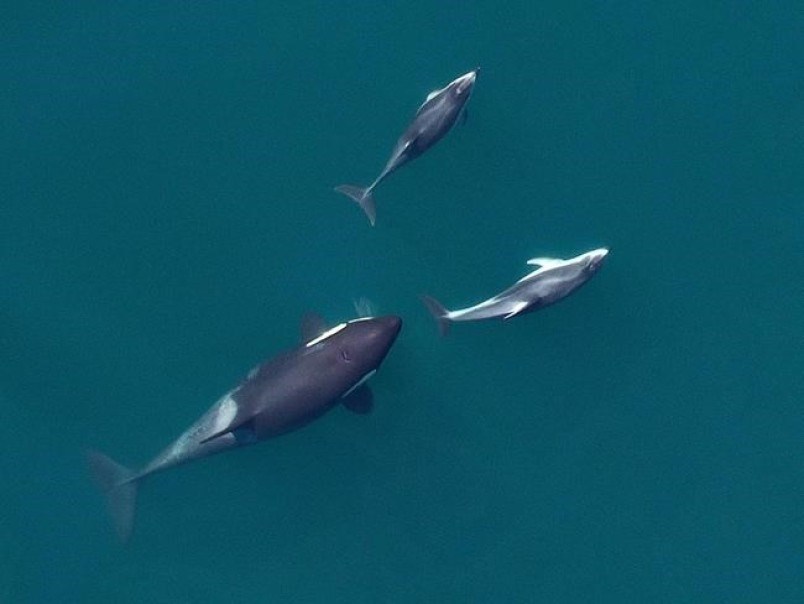VANCOUVER — Drone flights have revealed an odd couple of the deeps.
Scientists from the Vancouver Aquarium have released video of dolphins hanging around pods of killer whales, two species that are usually more like predator and prey than Felix and Oscar.
"When I saw it from above, I realized how intimate that association is," said biologist Lance Barrett-Lennard. "Dolphins are literally right on top of the killer whales and right on their heads."
Killer whales off the British Columbia coast generally fall into two groups, said Barrett-Lennard.
One group consists of resident whales. The other is made up of transients, also known as Biggs whales, which were named after the late marine mammal specialist Michael Bigg who first identified them in the north Pacific in the 1970s.
The resident whales, full up on salmon and other fish, don't eat dolphins. The transient whales most emphatically do.
"They eat exclusively marine mammals," Barrett-Lennard said. "Dolphins are definitely on the menu — in fact, quite high on the menu."
The two whale groups look almost the same but sound quite different.
Biggs whales tend to be quiet and low-key, as befits hunters stalking prey. The residents are not.
"Resident killer whales swim around vocalizing a lot, loudly and conspicuously," said Barrett-Lennard.
The two groups of whales have little to do with each other. Barrett-Lennard thinks that explains the presence of the dolphins, who've learned that if they're around resident whales, the Biggs are somewhere else.
"Sometimes a small group of dolphins will get in front of a group of (resident) killer whales and it will almost look like you're out walking your terrier and the dog's out ahead."
Dolphins have only become common off B.C. since the mid-1980s and when they first arrived, they avoided all killer whales. By the early '90s, scientists were starting to see dolphins near pods of resident whales.
But it wasn't until researchers recently started using drones to observe the animals that they realized how close the association was.
"Watching this from a boat, I hadn't appreciated the fact the dolphins get right in front of the whales," Barrett-Lennard said. "It's amazing what the dolphins get away with."
Porpoises, an aquatic mammal closely related to dolphins, do the same thing.
Resident whales don't seem all that enthusiastic about the presence of their smaller cousins, who may be interfering with their fishing. Barrett-Lennard said a whale will sometimes flap a fluke or swipe a tail for all the world like a brush-off.
"Sometimes, if a large group — 100 or more dolphins — approaches a small group of killer whales, often the whales will dive and stay down for longer than usual and then come up some distance away. You get the strong sense they're trying to shake the dolphins."
And what if the resident whales come up with their own insight and realize that dolphins are tasty? Unlikely, Barrett-Lennard said.
There's plenty of food in the sea for the two groups of orcas to co-exist, he suggested, but if one started to poach the other's meals, the results could be messy.
"It would have to deal with this issue of competition. These are formidable animals with big teeth, so you could imagine that competition would be pretty dangerous."
So, Barrett-Lennard concludes, the resident dolphins stay alive by tagging along with a beast that, everywhere else, is their biggest predator.
"When they're hanging out with residents, they're safe."
— By Bob Weber in Edmonton. Follow at @row1960 on Twitter




